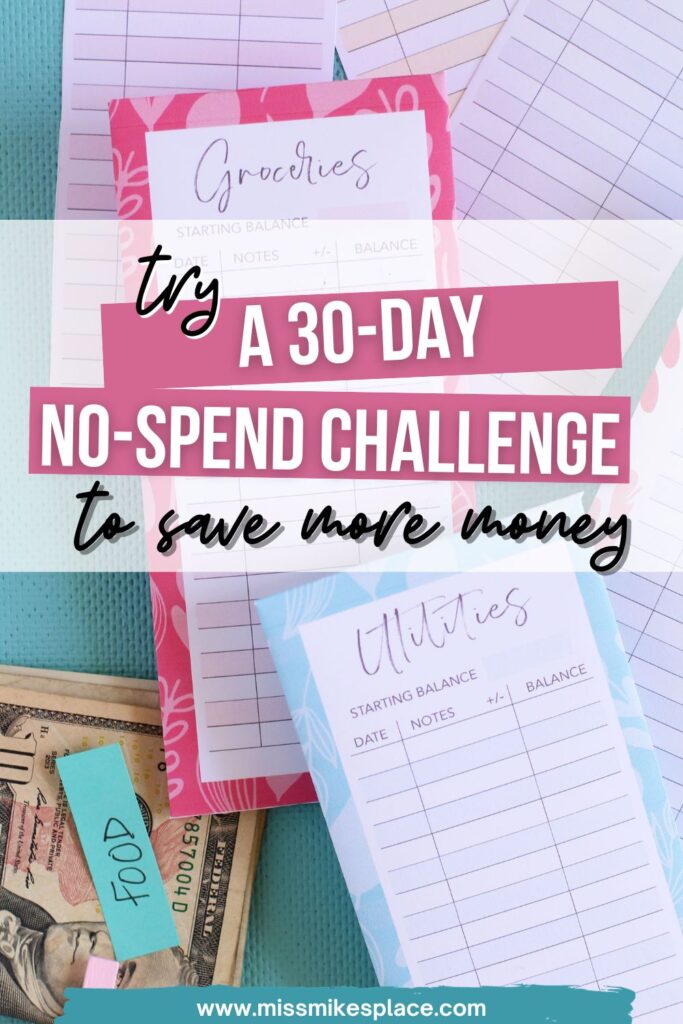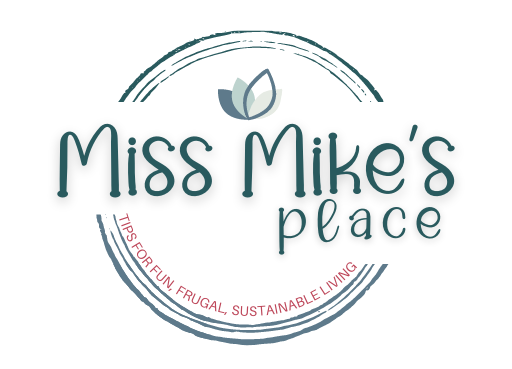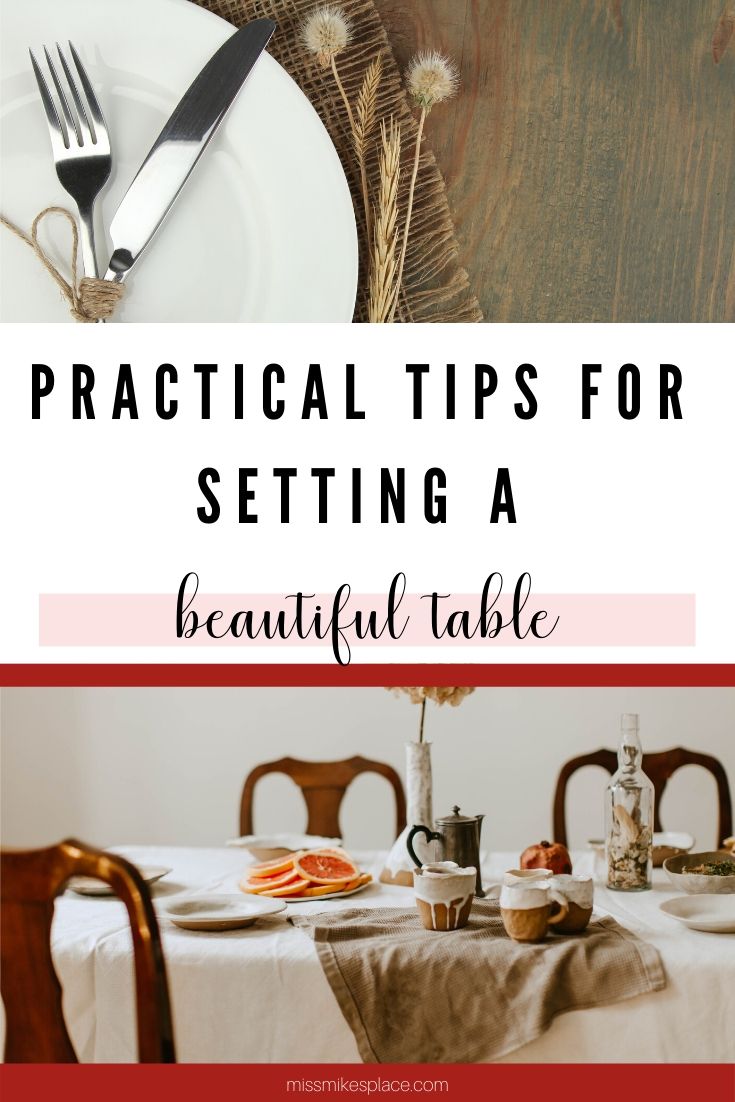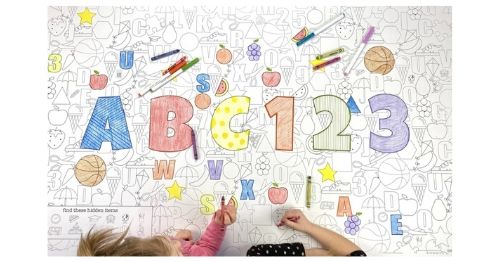Try a 30-day No-Spend Challenge to Save More Money
Are your finances out of control? Are you forever spending money like a drunken sailor on a 3-day liberty?
Consider taking a 30-day no-spend challenge. It’s not just about saving money, it’s about mindful spending! Take small steps towards making smarter financial decisions.
It pairs well with a dry January.
You’ll learn to prioritize your spending, take control of your finances, break free from impulsive spending, and redefine your relationship with money.
The best part? This challenge can set you up for lasting changes in both your finances and your lifestyle. So why not give it a try? The rewards are so-o-o worth it!
If getting the entire household on board for a 30-day challenge is too daunting, try a 2-week challenge. The rules stay the same, and the focus on unnecessary spending is still front and center.
It’s important to have the whole family on board. You’re all in the same boat and it will be more successful if everyone is rowing in the same direction.
The primary aim is to
- curb unnecessary expenses
- evaluate spending habits
- reallocate extra money toward more meaningful or long-term financial goals

How much money can you save during a no-spend challenge? That’s up to you.
You do the math.
A no-spend challenge is a fun way to get back on track with your financial goals! More importantly, it’s a great way to identify spending impulses and create better money habits.
A no-spend month doesn’t mean spending $0. You have to pay the rent or mortgage. You have to eat. Insurance premiums, child care, the orthodontist, school loans, and credit card debt; you have to pay these bills.
You set the rules. You determine the time period that will work for you and your family. A 30-day spending freeze is effective for a few reasons. A month gives you time to see patterns. You’ll identify the triggers for impulse spending.
Bad habits can be broken in 30 days. Good habits can be formed in the same time frame.
If that seems overwhelming, then opt for a 2-week spending freeze to try it out. Get a taste of how you and your family will adjust to the changes.
Reassessing your spending habits shouldn’t be viewed as punishment, but rather a more intentional approach to spending your hard-earned money.
Imagine a month where you feel lighter and less stressed, and your bank account is fuller. A no-spend month is the perfect way to achieve this.
For this month, limit your expenses to necessities and avoid all other spending. This challenge can help you gain control of your financial habits and bring clarity to your spending decisions.
Rules to Consider for a No-Spend Month
Essentials Only
Only spend on absolute necessities like groceries, bills, and emergencies. Look at last month’s bank and credit card statements. What expenditures fall under the category of “frivolous”? Decide what you and your family can’t live without, and what you can.
My money-saving strategy to avoid spending money impulsively is more of an attitude adjustment: if I can live 3 days without it, I don’t need it.
No Dining Out
Commit to preparing meals at home and avoiding restaurants or takeout. Get creative with meal planning by using what you already have in your pantry, fridge, or freezer.
Free Entertainment
Embrace free activities like local community events, hiking, game night, or movie night at home. Snack on a bowl of popcorn.
DIY & Repurposing
Try to repair or repurpose items instead of buying new ones. YouTube has videos on every possible DIY project you can imagine. Check out Pinterest for clever repurposing ideas.
No Impulse Buys
Avoid any non-essential purchases by creating a shopping list for things you need and STICK to it!
If you need more help then place orders online for pick-up and avoid the inside of a store altogether.
Borrow or Swap
If you don’t have a library card, now is the time to get one. It doesn’t cost anything to get a library card and the benefits are invaluable.
Check out books, movies, ebooks, or audiobooks instead of paying for them. Many libraries offer popular magazines and newspapers to check out or to access online.
Take advantage of the activities for children such as story-telling or crafts that are offered regularly.
Libraries offer more than just books. Check out a State Park pass for a free day of hiking or picnicking.
By tapping into these free resources at the library, you can enrich your life, pursue hobbies, and continue learning—all without spending a penny. It’s a valuable asset if you’re looking to make the most of a no-spend challenge.
Cash-Only, if you dare
Use cash instead of cards to feel the physical impact of spending. Cash envelopes are still an effective way to control impulse purchases. Simply label an envelope “groceries”, or “gas”, or whatever discretionary category you choose. Put the amount of money into each envelope you feel is reasonable for each category and don’t spend more than you have allocated. When it’s gone, it’s gone.
If carrying cash is not a comfortable option consider purchasing gift cards for things like gas or groceries and only spend the amount loaded on the card.
Limit Online Shopping
Resist impulse spending by avoiding online shopping sites. Unsubscribe from those sites that send you the irresistible deals on a daily basis. I’m looking at you, Zulily and Wayfair and Amazon and…you get the picture.
Prepare for a No-Spend Month
Preparing for a successful no-spend challenge involves careful planning and thoughtful considerations. Here are the best steps to take:
Set Clear Goals
Define the objectives you aim to achieve through the challenge and the set period of time you can commit to.
Can you do this for the whole month, or do you think you’d have more success with a no-spend week?
The motivation for doing this should be clearly defined, as well. Breaking bad habits, saving for a new car, contemplating a lifestyle change? You’re more likely to succeed when you have a clear picture of success.
Whether it’s saving a specific amount, paying off debt, or simply cultivating better spending habits, having clear goals will keep you focused.
Be very specific in your goal. You are
- saving $1000 for an emergency fund
- reducing monthly discretionary spending by 25%
- creating a $2500 family vacation fund for a Disney trip
- paying off all Christmas debts
You’re why is specific to you, your family, and your financial situation.
A vague notion of saving does not have the same impact as a clearly defined target.
Assess Your Finances
Review your current financial situation. Understand your income, essential expenses, debts, and discretionary spending. This assessment helps in identifying areas where you can cut back during the challenge.
Gather all financial documents, such as bank statements, bills, and credit card statements. Find out where your money goes.
Use a spreadsheet, budgeting app, or just a sheet of notebook paper to categorize expenses and determine your current financial standing.
It’s a good idea to compare insurance rates, phone plans, and interest rates on debt every year to see where you can lower these costs.
Identify Non-Negotiable Expenses
Make a list of bills and financial obligations that must be paid during the challenge month, including rent or mortgage, utilities, insurance premiums, loan payments, prescription medications, and monthly credit card payments.
Create a Budget
This does not have to be a comprehensive budget with a million categories. A simple budget that outlines your income and your essential expenses, such as rent, utilities, groceries, and transportation, is the general idea. This budget will be a guideline during the no-spend challenge, ensuring you prioritize necessary spending over non-essential items.
Allocate specific amounts to essential expenses (rent, utilities, groceries) and other non-negotiable expenses.
Conduct a Spending Audit
Review your bank and credit card statements from the past few months. Categorize expenses into essentials (non-negotiables) and discretionary spending to identify areas where you can cut back. You’ll get a good idea of what’s left at the end of the month that can be used towards your goal.
Plan to Eat in
Take an inventory of your pantry, fridge, and freezer. Use this information for meal planning based on what you already have. Make a grocery list of only essential items needed to supplement meals for the challenge period. Allocate a reasonable amount to your budget to spend at the grocery store each week on the additional items needed for your meal plan. Make sure you have a plan for meal prep, as well. Setting aside a small amount of time to prepare for the week is the best way to save a lot of time during the week.
If your cupboard is already bare, prepare a list of low-cost meals that you can make at home. See my ideas for pantry meals that are cheap and mostly healthy
Have a plan for the entire month. Shop as you normally do, weekly or bi-weekly whatever it is. Have a list and buy only what is on the list.
Try meatless meals, or soups and casseroles that use less meat to lower the grocery bill.
If your family likes snacks, consider popcorn as a super low-cost option. It’s easy to make and, while buttered, salted popcorn is classic the seasoning possibilities are endless.
Eliminate as many processed foods and beverages as you can. They are more expensive and offer little to no nutritional value.
Cancel Unnecessary Subscriptions
Go through bank statements or subscription lists and identify any unnecessary subscription services. Cancel or pause these services for the duration of the spending freeze. Bonus points if you identify something you don’t need at all!
If you already have more than one streaming service – it’s a no-brainer. Get rid of at least one of them. Both of them would be better.
Create a Support System
Discuss your challenge with family members, or housemates, explaining your goals and seeking their understanding and cooperation. Encourage them to join you or at least respect your commitment.
Let your close friends know what you are planning, you might be surprised to find that they want to join you! There aren’t many people who don’t struggle on some level with their finances.
More savings and less debt is a mighty tempting combination, don’t you think?
Find Free Alternatives
Research local community events, free entertainment options, and available resources like libraries or online platforms that offer free content. Make a list of those events or activities that appeal to you.
Plan movie or game nights at home. Decluttering or getting a head start on spring cleaning will be a productive way to spend time. Volunteer to help an elderly neighbor with yard work. Find alternative ways to spend your time that don’t involve spending money.
Prepare for Obstacles
Anticipate scenarios that might challenge your commitment. Can a prearranged social outing be rescheduled? Are there birthdays or other obligations already on the calendar?
Get creative in how to meet those obligations without spending anything. Do you have any unused gift cards you can put towards that event?
Avoid the store, online or IRL, that tempts you to buy new clothes. The new clothes that you don’t need!
Get creative in developing strategies to mitigate these challenges.
Stay Motivated
Create a visual representation of your goals, like a vision board or progress tracker. Set reminders or write down affirmations that motivate you and keep you focused on the benefits of the challenge.
By following these steps and preparing adequately, you’ll set yourself up for success during the no-spend challenge. The key to successfully overcoming financial challenges is to have a plan, gain a deep understanding of your financial situation, and remain dedicated to your goals throughout the process. Your hard work will be evident in your bank account at the end of the challenge.
Benefits of a No-Spend Challenge
Increased Financial Awareness
Engaging in a no-spend challenge prompts you to become acutely aware of your spending patterns. It sheds light on where money is being unnecessarily directed and helps identify areas for potential savings. Learn to tell your money where to go.
Improved Budgeting Skills
By temporarily eliminating non-essential spending, you’ll develop better budgeting habits. It encourages a thorough evaluation of needs versus wants and assists in creating a more efficient budget for the future.
Debt Reduction and Savings Boost
Cutting out unnecessary expenses frees up funds that can be redirected toward paying off debt or bolstering savings. It’s an effective way to jump-start emergency funds or accelerate debt repayment.
Mindful Spending Habits
The challenge encourages a more conscious and intentional approach to spending. See if you don’t find yourself reevaluating your purchases and making more mindful decisions even after the challenge ends.
Discovery of Alternative Entertainment
It’s rewarding to discover free or low-cost activities, hobbies, or resources that bring joy without significant spending. This shift in perspective can lead to long-term changes in entertainment and lifestyle choices.
Behavioral Change
Engaging in a no-spend challenge can create lasting behavioral changes. It encourages a reassessment of consumer habits, promoting a more sustainable and mindful relationship with money.
Learning to view money as the tool that it is, with no emotional attachment is a valuable lesson.
Increased Financial Discipline
Completing a no-spend challenge instills a sense of accomplishment and builds financial discipline. It strengthens willpower and encourages responsible financial decision-making in the future.
Reevaluation of Priorities
The goal of this challenge is to prompt you to reevaluate your priorities and reconsider what truly brings value and happiness into your life and the lives of your family, often leading to a more fulfilling and intentional way of living.
Tips
- Unsubscribe from store emails to avoid temptation
- Use only cash or your debit card for spending
- If you choose to use a credit card, make sure to use it only for purchases that are allowed, such as food or fuel
- Sign out of Paypal on your phone
- Delete shopping apps on your phone
- Make your “WHY” very clear
- Put your credit cards in a place that’s not easy to access
A no-spend challenge guide similar to the one I’ve laid out is used by a lot of people to reset personal finances and achieve their savings goals.
The challenge works and I hope you see positive results in your own spending habits when you are done.





